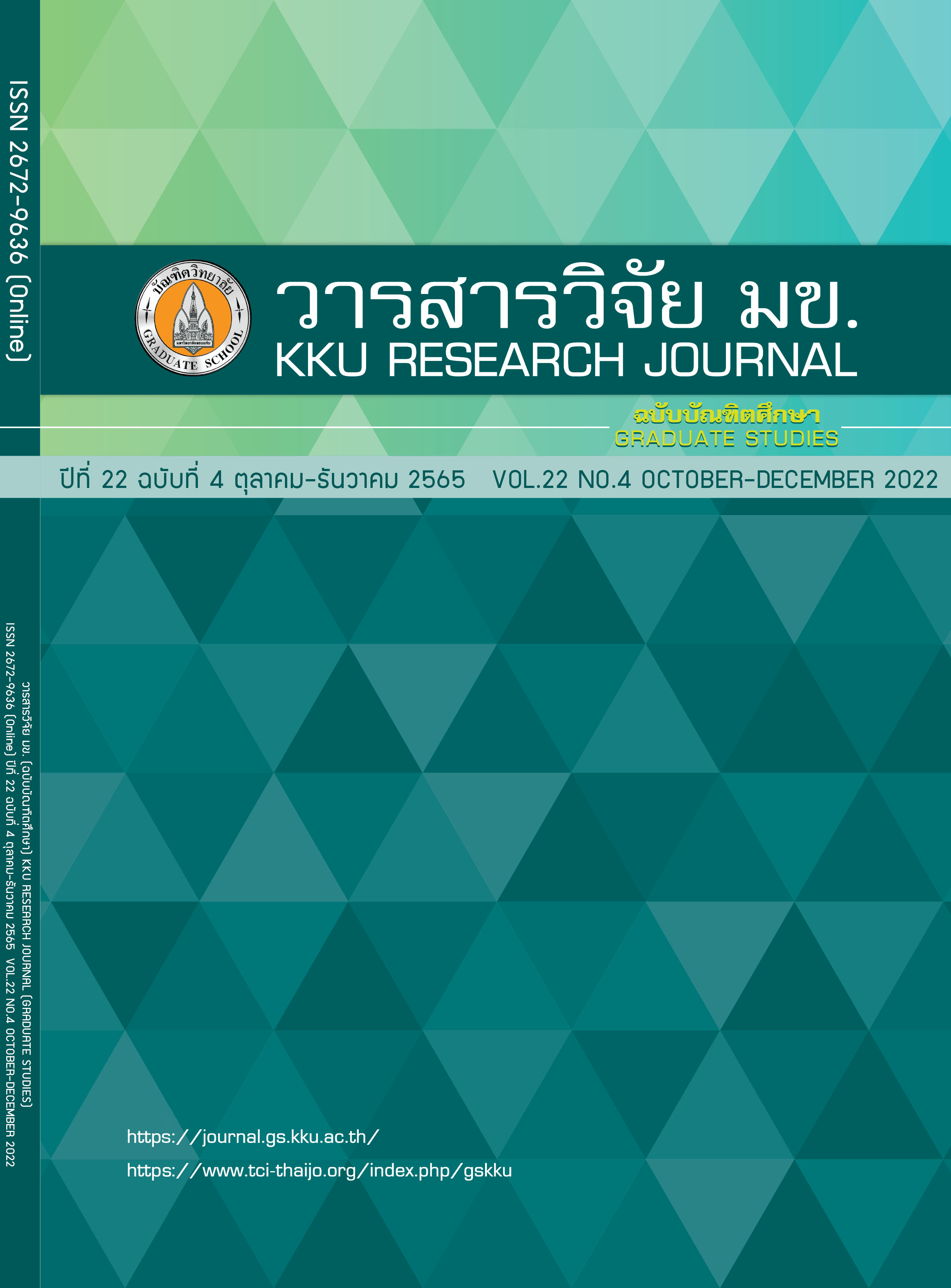Biodegradability and COD Fraction for Anaerobic Excess Sludge Digestion by Ozone Pretreatment
Keywords:
Biodegradability, COD fraction, Ozone pretreatmentAbstract
The purpose of this study was to investigate the effect of ozone pretreatment on waste activated sludge (WAS) considering the degradability and COD fraction at 0.1-0.5 g O3 /g TS. The SCOD/COD ratios were indicating parameter for capable of solubility that to reflect the extent of hydrolysis. As well as BOD/COD ratios and Biochemical Methane Potential, BMP were used to evaluated the WAS biodegradability. The results showed ozone concentration 0.5 g O3/g TS higher SCOD/COD ratio and biodegradability. And the result of BMP at 0.4 g O3/g TS ozone concentration showed highest biogas rate which is 0.33 L/g CODremove.
References
Qasim SR. Wastewater treatment plants. Second edition, CRC Press, New York. 1999.
Metcalf, Eddy Inc. Wastewater Engineering Treatment and Reuse. International Edition, ISBN 007-124140-X, McGraw-Hill, Singapore. 2004.
Yinying J, Huan L, Bux MP, Zhiyu W, Youngfeng N. Combined alkaline and ultrasonic pretreatment of sludge before aerobic digestion. Journal of Envirnmental Science. 2009; 21: 279-284.
Fakhru’l-Razi A, Molla AH. Enhancement of bioseparation and dewaterability of domestic wastewater sludge by fungal treated dewatered sludge. Journal of hazardous materials. 2007; 147(1-2): 350-356.
Chang CN, Ma YS, Lo CW. Appication of oxidation-reduction potential as a controlling parameter in waste activated sludge hydrolysis. Chemical Engineering Journal. 2002; 90: 273-281.
Kim J, Park C, Kim TH, Lee M, Kim S, Kim SW, Leej J. Effects of Various Pretreatments for Enhanced Anaerobic Digestion with Waste Activated Sludge. Journal of Bioscience and Bioengineering. 2003; 95: 271-275.
Benabdallah T, Dosta J, Ma´rquez-Serrano R, Mata-A´ lvarez J. Effect of ultrasound pretreatment in mesophilic and thermophilic anaerobic digestion with emphasis on naphthalene and pyrene removal. WATER RESE ARCH. 2007; 41: 87–94.
APHA, AWWA, WEF. Standard methods for the examination of the water and wastewater. Washington D.C.: American Public Health Association. 2005.
Gatti MN, Usach FG, Seco A, Ferrer J. Wastewater COD characterization: analysis of respirometric and hysical-chemical methods for determining biodegradable organic matter fractions. J Chem Technol Biotechnol. 2010; 85: 536–544.
Bougrier C, Albasi C, Delgenes JP, Carrere H. Effect of ultrasonic, thermal and ozone pre-treatments on waste activated sludge solubilisation and anaerobic biodegradability. Chemical Engineering and Processing. 2006; 45: 711–718.
Carrere H, Dumas C, Battimelli A, Batstone DJ, Delgenes JP, Steyer JP, et al. Pretreatment methods to improve sludge anaerobic degradability: A review. Journal of Hazardous Materials. 2010; 183: 1–15.
Vollertsen J, Hvitved-Jacobsen T. Biodegradability of wastewater – a method for COD-fractionation. Water Science and Technology. 2002; 45(3): 25–34.
Gavalakis E, Mamais D, Marinos C, Andreadakis A. An experimental and mathematical simulation of biological processes in a sewerage system. Global NEST Journal. 2006; 8(1): 75-81.
Downloads
Published
Issue
Section
License
Copyright (c) 2022 KKU Research Journal (Graduate Studies)

This work is licensed under a Creative Commons Attribution-NonCommercial-NoDerivatives 4.0 International License.



